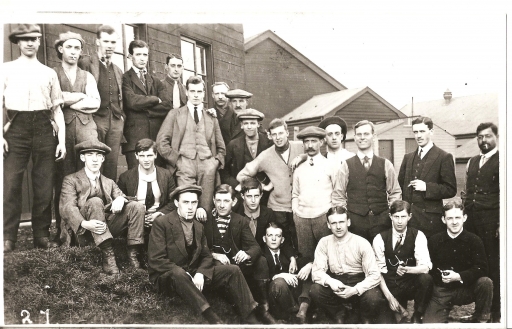Historians have shed new light on the story of the only Indian soldier among a group of Yorkshire volunteers who fought on the Western Front. Peter Alhadeff reports.
Jogendra Sen came from West Bengal to study electrical engineering at Leeds University, graduating in 1913. He was among the first to enlist in the 1st Leeds “Pals” Battalion when it was raised in September 1914.
Private Sen remained the only known Indian soldier to serve with the 15th West Yorkshire Regiment during the First World War. Despite his educated background, he wasn’t allowed to progress beyond the rank of private.
Sen was killed in action near the Somme in May 1916, aged 28. He was hit by shrapnel when his wiring party came under heavy bombardment in the weeks leading up to the Battle of the Somme.
He’s thought to have been the first Bengali to die in the war, and his name is remembered on Leeds University’s war memorial.
Tributes
There were many tributes to Private Sen, including this comment from his commanding officer, published in an obituary in The Times newspaper in September 1916: “His loss is felt very much throughout the whole of the company. He always showed himself to be a keen and upright soldier, and myself and the officers of this company thought a great deal of him.”
His story caught the attention of Dr Santanu Das, Reader in English at King’s College London, and an expert on India’s involvement in the First World War.
During a visit in 2005 to Sen’s home town of Chandernagore – a former French colony near Calcutta – Dr Das came across Sen’s bloodstained glasses in a display case in the local museum, the Institut de Chandernagore.
He said: “I was absolutely stunned when I saw the pair of glasses. It’s one of the most poignant artefacts I’ve seen, a mute witness to the final moments of Sen’s life. It was astonishing that something so fragile has survived when almost everything else has perished.”
Display case at the Institut de Chandernagore, showing some of Jogendra Sen’s personal effects, including his shattered spectacles and regimental badge (Photo © BBC)
Private Sen’s belongings were sent back from York to his brother in India in 1920.
A contemporary photograph shows him relaxing with his fellow Pals, who knew him as Jon, wearing what is thought to be the same spectacles Dr Santanu Das found almost a century later.
While giving a talk in Leeds as part of the university’s Legacies of War centenary project, Dr Das mentioned his discovery in India. Keen-eyed members of the audience pointed out that Sen’s name was among those on the university war memorial nearby.
Further information flowed in from community researchers Dave Stowe and Andrea Hetherington, who have worked with academics on Legacies of War. Mr Stowe had already been researching Jogendra Sen as part of work to find out more about those on Leeds University’s roll of honour.
Global war
Professor Alison Fell, who leads the project, said: “I found the piecing together of Sen’s story from the historical traces of his life and death that had survived in India and in Yorkshire very moving.
“His story also illustrates the extent to which the First World War was a global war that involved colonial soldiers and workers as well as those who volunteered or who were conscripted in their home nations.”
Dr Das added: “The glasses led me to find other remarkable objects, some from my own extended family, and onto a tantalising trail of other educated middle class Bengalis, who often served as doctors – and partly inspired my book 1914-1918: Indians on the Western Front, which tells their story through photographs and objects.
“More than a million Indian soldiers and non-combatants served in different theatres of the First World War, but what is so unusual about Jogendra Sen is that he was not part of the Indian army but of the Leeds Pals Battalion.
“I sometimes wonder what his experiences would have been as the only non-white person in the battalion at that time; and of his family when the glasses arrived, all the way from France to Chandernagore.”
Excluded
Historians point out that Bengalis were initially excluded from the Indian Army and were rarely found in British regiments. They were deemed to be a “non-martial” race as part of Britain’s divide-and-rule colonial policies in India.
Fewer than 100 Bengalis are thought to have fought in the conflict, although they supported the war effort in other ways, such as through fundraising or medical work.
In total, India contributed some 1.5 million men as soldiers and non-combatants (including labourers and porters) to the war effort.
Further reading can be found on the University of Leeds website.
Private Sen’s story was told in the Yorkshire and Lincolnshire edition of the BBC’s Inside Out tv documentary series, broadcast on Friday March 6th 2015. The programme is available in the UK on BBC iPlayer until April 5th 2015.
To discover more about Leeds University’s Legacies of War centenary project, click here.
Source: University of Leeds
Images courtesy of Laurie Milner (Leeds Pals) & BBC (Jogendra Sen’s effects)
Posted by: Peter Alhadeff, Centenary News
